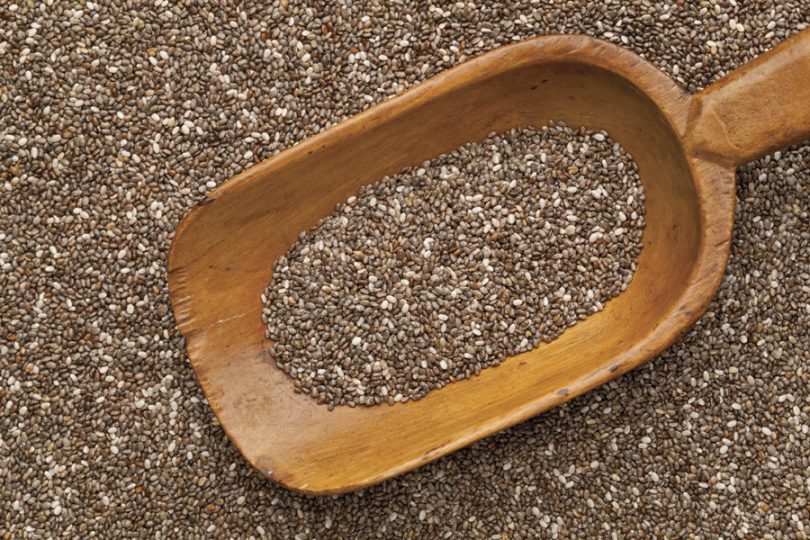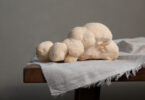Written by Donna C. Gregory
(Try the Chia Pudding Recipe at the end of this article)
Tired of the same old staples ending up in your grocery store shopping cart? Have your meals become as stale as the French bread you bought five days ago? Here are 10 “exotic eats” that will broaden your palate and give your health an extra boost.
Anchovies
These small, oily fish are packed with big doses of healthy omega-3 fatty acids, thought to reduce cardiovascular disease and improve brain function.
“Anchovies are also a good source of protein and calcium because they have the bones in them,” says Lynn Earle, registered dietician with Health Promotion and Nutrition Consulting, a Virginia Beach firm that offers nutritional counseling.
They are commonly sold in tins alongside cans of tuna fish in most grocery stores. Fans of anchovies often serve them on pizza or add them to a traditional Caesar salad dressing.
“They’re good diced up really fine and put into tomato sauce to give it a salty flavor,” suggests Victoria Fink, registered dietician with American Family Fitness.
Beef tongue
Paleolithic hunters enjoyed beef tongue because of its high fat content. While most of humanity no longer hunts for food, countries around the world, including Mexico (tacos and burritos), Indonesia (stew) and Bulgaria (bathed in butter), continue to dine on beef tongue. It reportedly tastes similar to pot roast and is often paired with onions and garlic.
“If you can get past the weird factor, beef tongue is actually fairly high in protein,” Earle says.
It is available for purchase at Tan A market, an Asian food store in Richmond, or order one from your local butcher.
“This product needs to be boiled and skinned,” says Travis Chandler, pediatric dietician with Henrico Doctors’ Hospital. “It lends well to moist cooking methods, such as braising or stewing. It should be cut across the grain to assist with tenderness.”
Chia seeds
Remember those “ch-ch-chi-chia” commercials back in the 1980s? Well, those little black seeds that are used to grow chia pets are now considered to be a nutritional powerhouse, packed with protein, fiber and omega-3 fatty acids.
“Chia seeds are a great source of energy,” says Deborah Farley, a Richmond-based licensed acupuncturist and certified holistic health coach. “In ancient times, the Aztec warriors could survive on these with a tablespoon a day. You can add chia seeds to anything—cereal, yogurt, salads, muffin mixes.”
The seeds are relatively inexpensive and are available at most health-food stores.
Durian fruit
Durian fruit is loaded with vitamins C and B, fiber and potassium – but you have to get past the smell to enjoy all of those benefits.
“It really, really stinks,” Farley says. “It smells like dirty socks, but the really cool thing about it is once you get the meat out of it … there’s a custard-like substance around the seed pod.”
Farley recommends pureeing the custard in a food processor, then topping it with berries or a dash of cinnamon.
Durian is native to Asia and typically sold at Asian grocery stores, often in the frozen-food case.
Guava
There’s more vitamin C in just the rind of the guava fruit than an entire orange! Native to South and Central America, guava is commonly found in most grocery stores now. The entire fruit is edible (including the seeds, which are a good source of fiber) and can be eaten like an apple.
“It’s also pretty popular in jams, jellies
and juices,” says Rachel Bulifant, community dietician for Bon Secours Richmond Health System.
Kohlrabi
This type of German cabbage is a good alternative to radishes. It’s low-calorie, low in fat and is an excellent source of vitamins B and C.
“You can eat the leaves like you do with spinach, but most people choose to eat the root,” Finka says.
The root is often shredded into salads, and it’s also good pickled.
Kohlrabi is usually sold in health-food stores, but mainstream grocers, like Kroger, are also starting to carry it. Look for kohlrabi near the radishes.
Shad roe
Shad roe is rarer than caviar. There’s a limited window each year to try what’s considered to be a delicacy, so look for it at the fish market when the daffodils are blooming in early spring. The shad itself is usually ruby red, but the real prize lies within the ugly sac containing the eggs that’s attached to the fish’s flesh.
Shad isn’t high in calories, but it is high in cholesterol—even more so if it’s poached in butter, which is a traditional preparation method. It’s high in B12 and selenium, which promotes a healthy thyroid.
Starfruit
Starfruit is a perfect choice for finicky kids since its natural star shape makes it fun to eat healthy. They don’t need to know that one cup of starfruit contains more than 60 percent of the daily recommended dose of vitamin C.
It’s also quick and easy to serve – just wash and slice – or use the juice for a zingy citrus salad dressing.
Tempe
Tempe is a soy-based product that’s often used by vegetarians as a meat substitute.
“This product contains both poly- and monounsaturated fatty acids, as well as all your essential amino acids,” Chandler says. “It has a nutty flavor … and can take on flavors.”
According to Earle, the simplest way to prepare tempe is to slice it and then sauté it in olive oil. It can be used in sandwiches and stir-fries or baked into a loaf (like meatloaf).
Tempe is now commonly found at grocery stores.
Venison
Hunting season isn’t always just about the sport. For venison fans, it becomes a time of feast.
“[Deer] are not farm raised, so they are not exposed to hormones and pesticides like what you get from most of the meat sources at grocery stores,” Earle says. “It is as versatile as beef, but you have to know how to cook it.”
Earle suggests marinating deer meat and then slow-cooking it, or slice it thin and sauté it quickly. It’s also good in a stew.
Your best source for venison is the guy wearing the orange cap and vest.
Chia Pudding
Recipe courtesy of Deborah FarleyIngredients
1 c cashews
2 c water
1/2 c honey
1 T cinnamon
1/4 tsp nutmeg
1/4 tsp ginger
1 t vanilla
1 vanilla bean
1/4 tsp salt
1/2 c chia seedsBlend together all ingredients except chia seed. This will result in a cashew milk/cream. For a milkier consistency, add more water.
Place chia seeds in a bowl and pour cashew milk over them. Whisk for about 3 minutes until well blended. Set aside for 15 minutes. Whisk again and place in refrigerator for at least 1 hour before serving. Top with berries or other fruit. Store leftovers in a covered bowl for up to one week.


